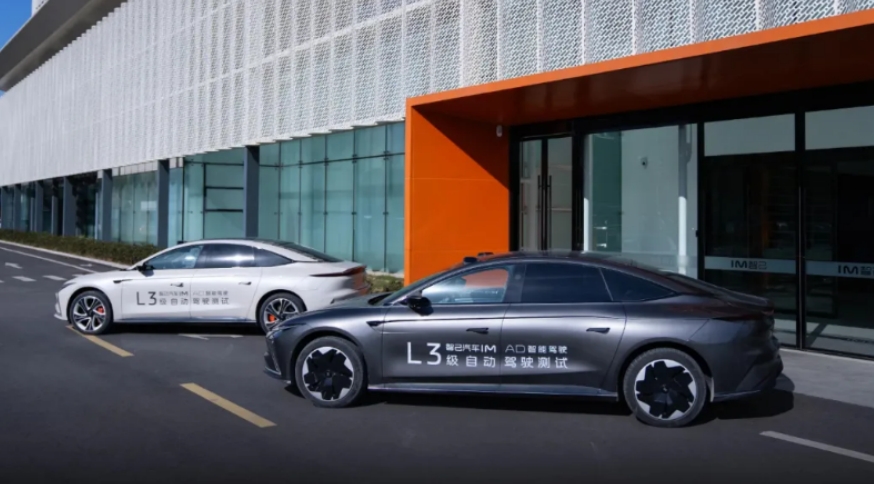
Recently, the Ministry of Industry and Information Technology issued a notice confirming the first batch of nine pilot joint ventures for testing intelligent connected vehicles on roads. This is an implementation of the pilot framework proposed in November 2023 for intelligent connected vehicles. With improved policy support for autonomous driving at the L3/L4 level, China's intelligent connected vehicle industry has entered a new stage of development, accelerating the promotion of scale.
9 auto companies enrolled the first “white list”
The first centralized application plan was preliminarily reviewed and selectively evaluated by four departments. After research, nine consortia were selected to enter the pilot program, including SAIC Group, Hongyan, Changan Auto, BYD, GAC Group, BAIC BLUEPARK, FAW Group Corporation (FAW), Yutong and NIO, located in Beijing, Shanghai, Guangzhou and other cities.
The pilot program is primarily based on consortia, with each consortium corresponding to one automotive enterprise. The automotive production enterprises are responsible for manufacturing and then handing over the products to the respective consortia for testing or operation.
 Photo credit: immotors
Photo credit: immotors
The majority of users on the list are affiliated with car manufacturers' ride-hailing platforms. For example, SAIC Motor Corporation is associated with SAICMOBILITY, an online car-hailing platform invested in and established by SAIC Motor Corporation.
According to experts in the autonomous driving industry, the initial breakthrough of L3 autonomous driving is expected to focus on To B ride-hailing services, particularly with successful implementations in Wuhan by companies like Apollo Go and Robotaxi as a major area of emphasis. Additionally, conducting tests on actual roads for L3-level autonomous driving will help evaluate product performance and safety assurance capabilities, preparing for future large-scale production.
It’s still hard to implement advanced auto driving
According to national standards, autonomous driving is categorized into six levels (L0-L5) representing different degrees of assistance and automation: emergency assistance, partial driving assistance, combined driving assistance, conditional automated driving, highly automated driving, and fully automated driving. The focus of this pilot project is on implementing Level 3 and Level 4 autonomous driving applications.
According to industry experts, L3 autonomous driving is widely considered the starting point for autonomous driving in the industry. If a vehicle using L3 autonomous driving is involved in a traffic accident, the car manufacturer will be responsible. Previously, there were no clear regulations or laws supporting responsibility division for accidents involving L3 autonomous driving, resulting in unofficial classifications like L2.5/L2.9. The official implementation of this pilot program signifies that autonomous driving technology is transitioning from laboratories to practical applications and will greatly benefit the mass production and application of intelligent connected vehicles.
It is worth noting that leading companies in autonomous driving such as Tesla, Huawei, and Xpeng were not included in this L3 pilot selection, which has sparked widespread attention and discussion in the automotive industry. The pilot list consists of a consortium of "automobile manufacturing companies" and "transportation service companies", excluding both Huawei and Xpeng due to their lack of independent ride-hailing platforms.
The current selection of these 9 consortia is only for completing the pilot application phase and does not imply that intelligent connected vehicles with autonomous driving capabilities have obtained admission permits or are allowed on the road, according to relevant departments. Industry experts commented that some of these consortia may be rejected during the actual on-road pilot phase.
According to Dongwu Securities' research report, automobile manufacturing enterprises and users who have not participated in the pilot program can voluntarily apply to provincial industrial and information technology authorities after assessing their capabilities, following the application process for the pilot program. It is recommended to subsequently monitor the release of a new list of pilot consortiums.
The pilot project will be divided into five stages: pilot application, product access pilot, on-road trial operation pilot, pilot suspension and withdrawal, evaluation and adjustment. The joint body entering the pilot will be guided by four departments to carry out implementation work. Only intelligent connected vehicle products that have obtained a product access permit can conduct on-road trial operations within designated areas after being registered by traffic management departments.
According to the industry, this pilot program is just the beginning. Timely improvement of laws and regulations is crucial for achieving large-scale commercialization of Level 3 and higher-level autonomous driving. Additionally, it should not be overlooked that although necessary hardware like LiDAR has been installed for autonomous driving, its mechanism for addressing rare events remains imperfect. The ability to solve rare situations beyond the 99% daily scenarios currently acts as a barrier and constraint for the success of the autonomous driving industry.
Translator:Wei Xiong

 Room 1104,Block B,JingBan Building,6 Middle Beisanhuan Road,Xicheng District,Beijing
Room 1104,Block B,JingBan Building,6 Middle Beisanhuan Road,Xicheng District,Beijing
 (8610)62383600
(8610)62383600
 quanqixiang@carresearch.cn
quanqixiang@carresearch.cn
 京公网安备:11010202007638号|京ICP备17032593号-2|Report illegal and bad information:010-65993545-8019 jubao@carresearch.com
京公网安备:11010202007638号|京ICP备17032593号-2|Report illegal and bad information:010-65993545-8019 jubao@carresearch.com
Legal support:Beijing Yingke Law Firm|All rights reserved, DO NOT reproduce without permission